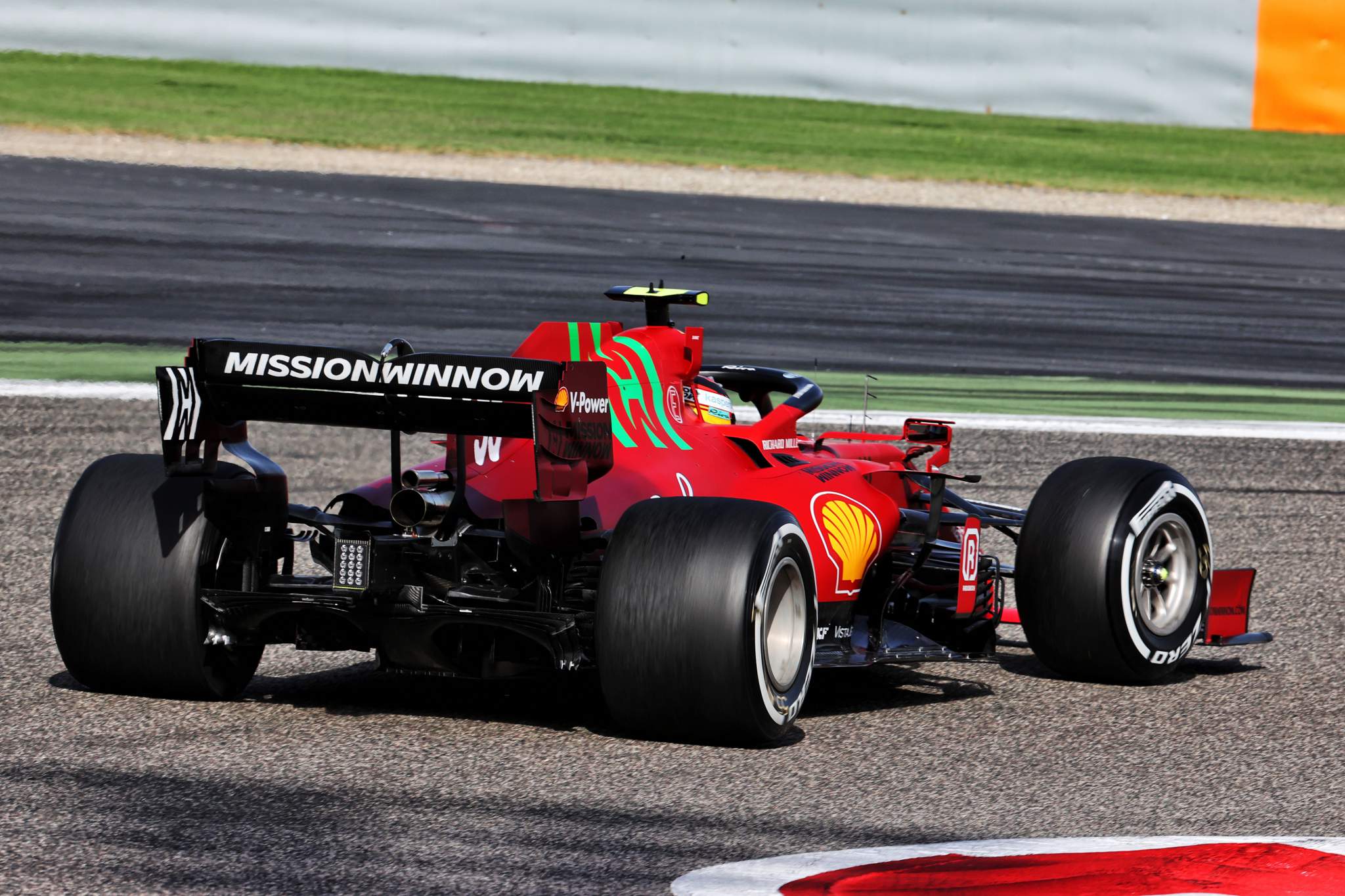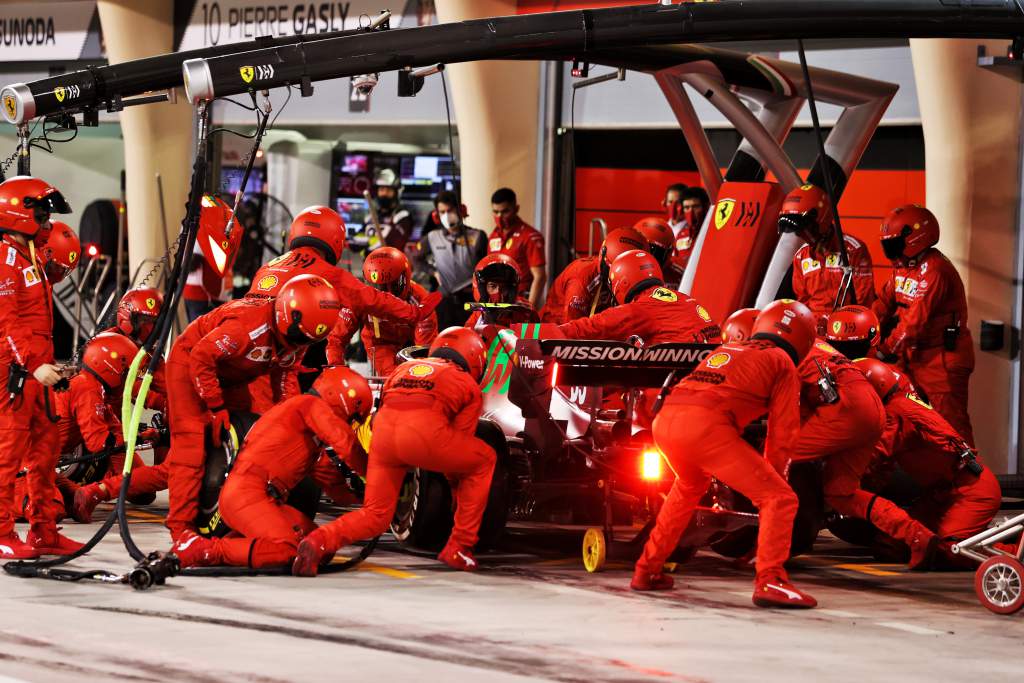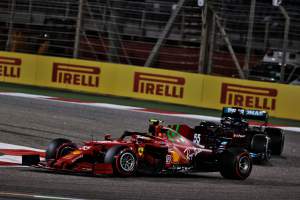Up Next

Ferrari Formula 1 boss Mattia Binotto’s verdict on its position at the start of the 2021 included the interesting contrast that he is relieved, but that the team is “lacking in all areas”.
Binotto is reassured by Ferrari’s improved engine and buoyed by how both that and its upgraded car have compared to its simulation data. However, those positives are all relative because the team is still a “long way” from a podium on merit.
The first position reflects how bad Ferrari was in 2020. The second is a bleak, but honest, admission that even a big step from last year still leaves the team quite some distance from where it should be.
“Happy because we are progressing, not happy that we [know we can be] even better than that,” was Binotto’s basic assessment. That duality is a fair reflection of Ferrari’s tricky and still fundamentally underwhelming situation.
The Bahrain Grand Prix suggested that, despite Ferrari’s fears another tough midfield battle is on the cards, it might well emerge from this season with the progress it expected to make by rising to third again in the championship.
In qualifying, Ferrari was the team that lost the least performance compared to the event at the same circuit in November 2020. Lead driver Charles Leclerc’s qualifying time was only 0.541 seconds slower than it was last year despite the regulation changes to cut downforce that contributed to world champion Mercedes being more than two seconds slower.

“If I look at where we were last year at the exact same place, there’s been good progress,” says Leclerc, who slipped to sixth in the race he had finished 10th in last year.
“We want to be fighting for the win very soon, but realistically, and honestly, we’ve done a great job to catch up and be closer to McLaren at least and fighting with them in the race.”
Ferrari started last season with a surprise podium courtesy of Leclerc’s classy drive in the Austrian Grand Prix, so on paper its prospects didn’t seem so bleak early on. But in reality, the 2021 season has started off more smoothly.
Correlation from factory to track is “not causing problems”, says Binotto, the car is behaving as expected and the team’s understanding of the SF21 seems solid.
Given the extent of Ferrari’s difficulties last year with its aerodynamic troubles, engine weakness and the struggles of Sebastian Vettel, it had a lower baseline than many when it comes to this comparison.
Therefore, it’s less a case of Ferrari dealing with the rule changes better than others and more down to how much low-hanging fruit there was for it to harvest with its modified car.
Last year’s Ferrari slump was down to chassis weaknesses as well as its poor engine. As well as carrying too much drag for its reduced engine power, the Ferrari SF1000 suffered from an unstable rear end.

So Ferrari spent its two development tokens on an elongated gearbox casing, which allowed it to mount the rear leg of its lower suspension wishbone to it. This was a clever way to mimic the rear suspension concept Mercedes adopted last year, creating cleaner airflow at the rear of the car.
The differential has also been raised, allowing the creation of deeper side-channels at the rear of the car. The result is far greater potential for rear downforce, doubly essential given the losses caused by the rule changes to the floor this year. Now Leclerc describes the car as “a bit easier to drive” with an improved balance.
Meanwhile, Binotto admits that “certainly the power unit has improved” but adds “there is progress in all the areas”.
“The aero is certainly better in terms of behaviour,” he stresses. “I think it’s the entire package.”
Ferrari had the least competitive power unit of the four manufacturers last year, which was the result of a series of technical directives impacting fuel flow ahead of the season. These technical directives, of course, were the result of Ferrari’s collaboration with the FIA – in turn a consequence of the FIA’s suspicions, which it could not prove and that Ferrari has denied, that the engine was running illegally at times in 2019. But the impact was clear and cost Ferrari around 65bhp.
As the engines were frozen throughout last season, Ferrari only had the chance to make its first upgrades with its 2021 engine. Binotto admitted to being relieved that the anticipated engine gains compared favourably with the opposition in Bahrain, allowing Ferrari to work with more “serenity” than last year when its primary problem last year was the weakness of its engine package.

Bahrain is a power circuit, with four significant straights, so it’s encouraging that Ferrari went from being eliminated in Q2 last year to being best of the rest in qualifying this year. It’s no coincidence that Ferrari customer team Alfa Romeo also made a big step in this area and was second only to Ferrari in terms of the least performance lost compared to Bahrain 2020.
“I feel relief certainly because we may work [race] in a better position, it’s healthy for the team,” says Binotto.
“It’s important that the team can stay calm and positive. Seeing the car has progressed, with the team in a serenity where we can work in a better manner, is important.
“It’s not only from the engine – [it’s also] chassis, drag, aero, correlation. How much from the power unit is difficult to say because it’s all relative to the competitors, it’s not an absolute value and I don’t know the progress of the others. Again, we just have to judge the entire package.”
And when we do that, despite the biggest relative gain of any team, Ferrari was still six tenths from pole position in Bahrain and finished a minute behind the race-winning Mercedes.
“We’re lacking in all areas,” says Binotto. “We’re lacking in the engine, less than before, the gap has closed and I think we’re converging, and hopefully next year when we’ll have a new power unit we’ll catch up.
“I think the aero as well, the entire package. [But] we are working in the right direction, with the right tools.”
The engine gains are reckoned to be worth a little more than 20bhp, which isn’t anywhere near enough for parity with Mercedes or even the improved Honda powering the Red Bull.
The big steps are expected next year when Ferrari is expected to adopt the split turbo concept pioneered in F1 by Mercedes in 2014. Honda already uses this design, while Renault will also change over next year prior to the engine-specification freeze that covers 2022-2024.
As a result, Ferrari’s engine performance gain this year has been useful and certainly will put it in a better position, but still puts it at a disadvantage compared to its direct rivals in the midfield, notably Mercedes-engined McLaren and Honda-powered AlphaTauri.
Within the limitations of just one race weekend and all of the running so far taking place at the same circuit, we can conclude that Ferrari has made significant progress. The question is whether it’s enough to be a consistent threat at the front of the midfield.

It still required a spectacular qualifying lap from him to take fourth place on the grid as the leading midfield runner, with his slide to sixth behind the McLaren of Lando Norris and recovering Red Bull driver Sergio Perez perhaps more representative of where Ferrari stands.
And as Binotto has admitted, even if Ferrari does manage to haul itself ahead of McLaren, there’s still plenty of work to be done longer-term.






